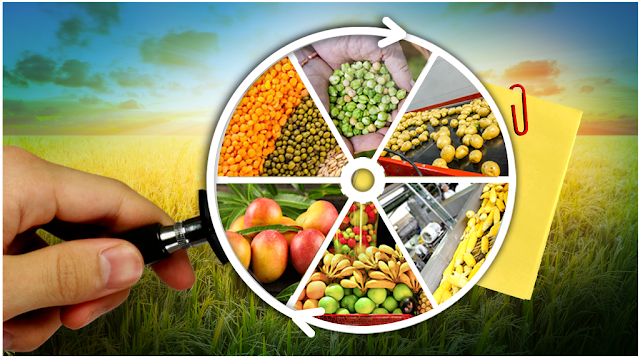White Coal Project Cheap And Excellent Method For Processing Agro And Forest Residues
The waste disposal is the biggest challenge that every country is experiencing today, and the white coal Project makes the smart and best disposal method by which the farmers can mint the substantial revenue. Every year a lot of agricultural scrap is produced and burnt inefficiently. But you can avoid this by converting it into the white coal (briquettes).
White coal is the type of high density and energy concentrated bio-fuel generated via the agro waste or forest waste. Also the production process of the white fuel, i.e., solid briquette does not require any external chemicals or binders to bind the crushed raw material. The ministry of non-conventional energy and government of India have declared a lot of incentives to promote the white coal project.
The government has also given depreciation tor the plant and machines in the first year. They have also exempted the entire industry of non-conventional energy resource from getting any license. You can widely use this bio-fuel in the boilers, ovens, furnace, heaters, etc. The white coal machine take the waste like as groundnut shells, cotton stalk, sawdust, castor seeds, shrub cuttings, fallen leaves, rice husks, etc., compresses it and then create the uniform log pieces.
Coal vs. White Coal (Briquettes)
Unlike the black coal or charcoal, this solid fuel offers more heat. It is storage convenient, does not create any pollution when you burn it, and also not produce the deadly sulphuric/phosphoric gases. White fuel has a calorific value of about 3500-5000k cal/kg whereas the calorific value of the coal is 20 % more. The ash content in the bio-coal briquettes is almost negligible where the fly ash content in the coal is near about 20 to 40 percent. The moisture content in these briquettes is 2 to 5 percent and in the coal, its 25 to 30 percent. Coal has high carbon content whereas the white coal has the low carbon content.
Conclusion:
This fuel does not harm the environment and also the best substitute for the charcoal and fuel. It also mitigates the harmful greenhouse gas emissions and also provides a healthy and clean atmosphere for the environment and consumers. This non-conventional energy source is eco-friendly and renewable. Nowadays, a lot of agencies are opting this project to save a massive amount on the boiler fuel costs because the energy-efficient white coal is the only way to strengthen the economy and control the increasing cost of energy.The waste disposal is the biggest challenge that every country is experiencing today, and the white coal Project makes the smart and best disposal method by which the farmers can mint the substantial revenue. Every year a lot of agricultural scrap is produced and burnt inefficiently. But you can avoid this by converting it into the white coal (briquettes).
White coal is the type of high density and energy concentrated bio-fuel generated via the agro waste or forest waste. Also the production process of the white fuel, i.e., solid briquette does not require any external chemicals or binders to bind the crushed raw material. The ministry of non-conventional energy and government of India have declared a lot of incentives to promote the white coal project.
The government has also given depreciation tor the plant and machines in the first year. They have also exempted the entire industry of non-conventional energy resource from getting any license. You can widely use this bio-fuel in the boilers, ovens, furnace, heaters, etc. The white coal machine take the waste like as groundnut shells, cotton stalk, sawdust, castor seeds, shrub cuttings, fallen leaves, rice husks, etc., compresses it and then create the uniform log pieces.
Coal vs. White Coal (Briquettes)
Unlike the black coal or charcoal, this solid fuel offers more heat. It is storage convenient, does not create any pollution when you burn it, and also not produce the deadly sulphuric/phosphoric gases. White fuel has a calorific value of about 3500-5000k cal/kg whereas the calorific value of the coal is 20 % more. The ash content in the bio-coal briquettes is almost negligible where the fly ash content in the coal is near about 20 to 40 percent. The moisture content in these briquettes is 2 to 5 percent and in the coal, its 25 to 30 percent. Coal has high carbon content whereas the white coal has the low carbon content.
Conclusion:
This fuel does not harm the environment and also the best substitute for the charcoal and fuel. It also mitigates the harmful greenhouse gas emissions and also provides a healthy and clean atmosphere for the environment and consumers. This non-conventional energy source is eco-friendly and renewable. Nowadays, a lot of agencies are opting this project to save a massive amount on the boiler fuel costs because the energy-efficient white coal is the only way to strengthen the economy and control the increasing cost of energy.
KatkutAgro:
Wholesale importer of agricultural products
·
BEANS
·
CEREALS
·
CHICKEN
·
EGGS
·
FLOUR
·
GRAIN
·
HONEY
·
NUTS
·
Walnuts
·
OIL
·
Edible
·
Walnut
·
OTHER
·
PEAS
·
SEEDS
·
SUGAR




Comments
Post a Comment